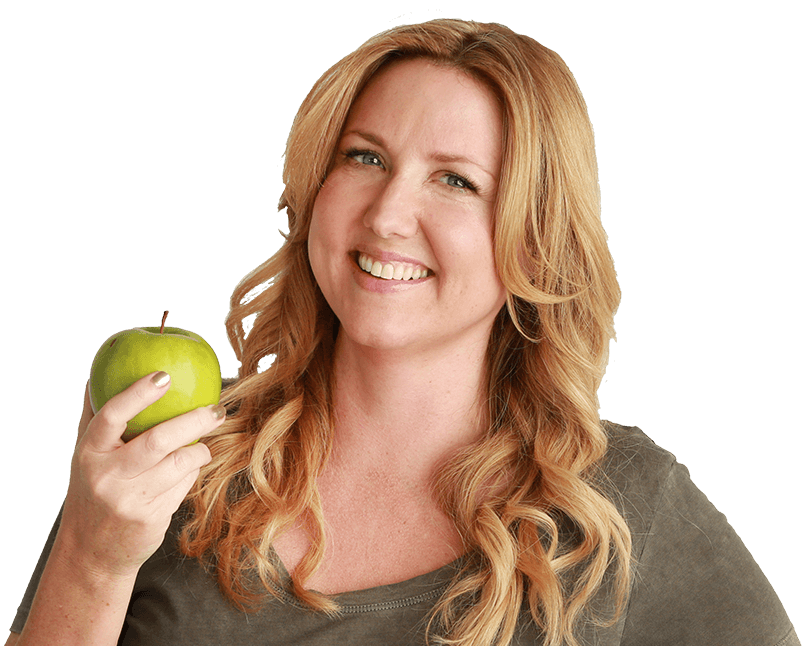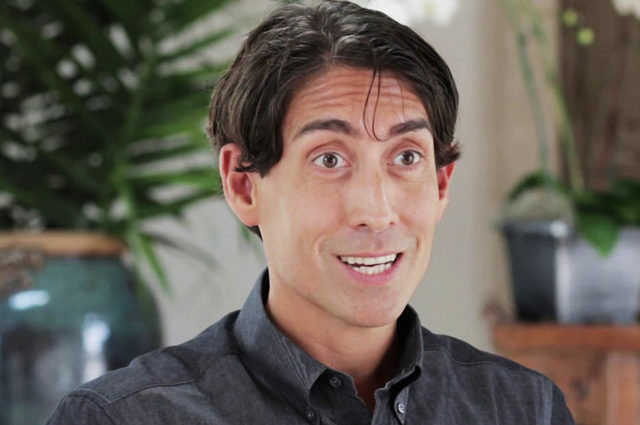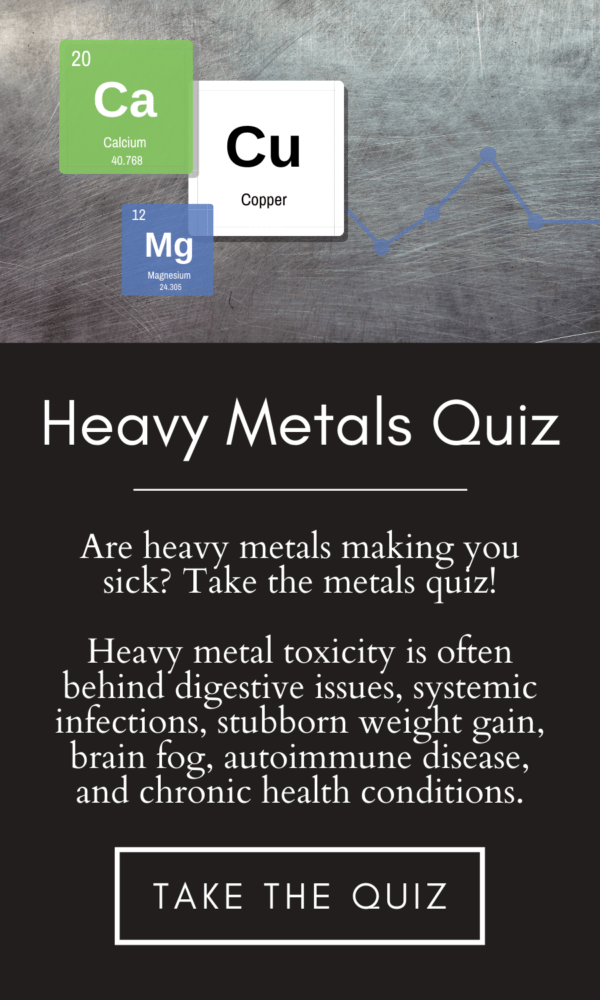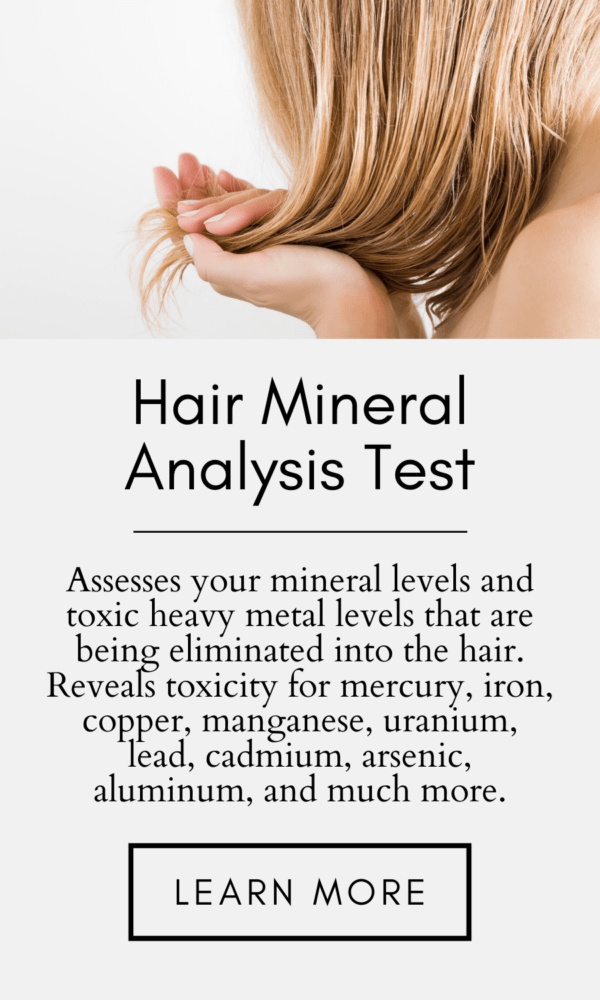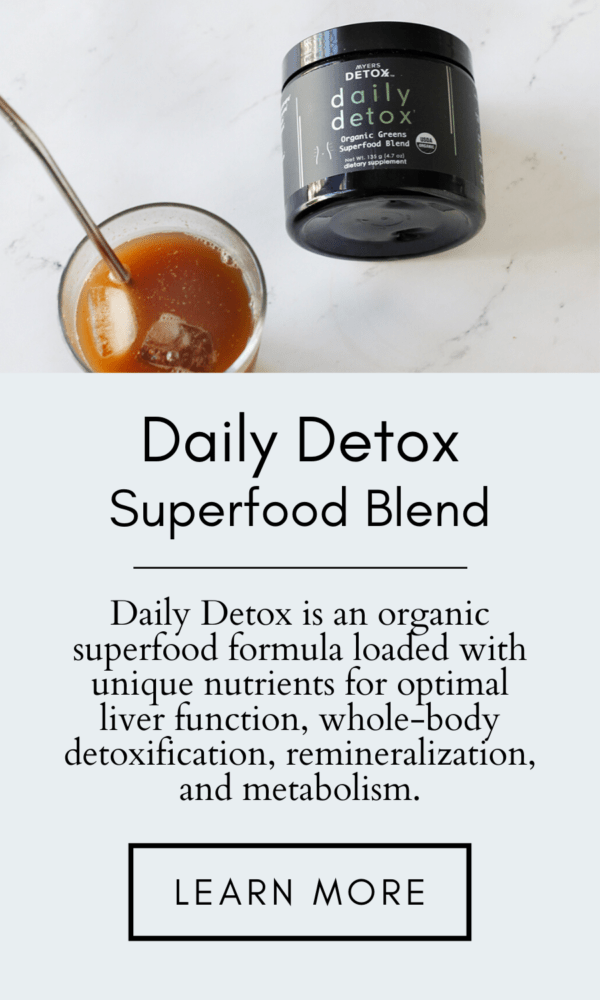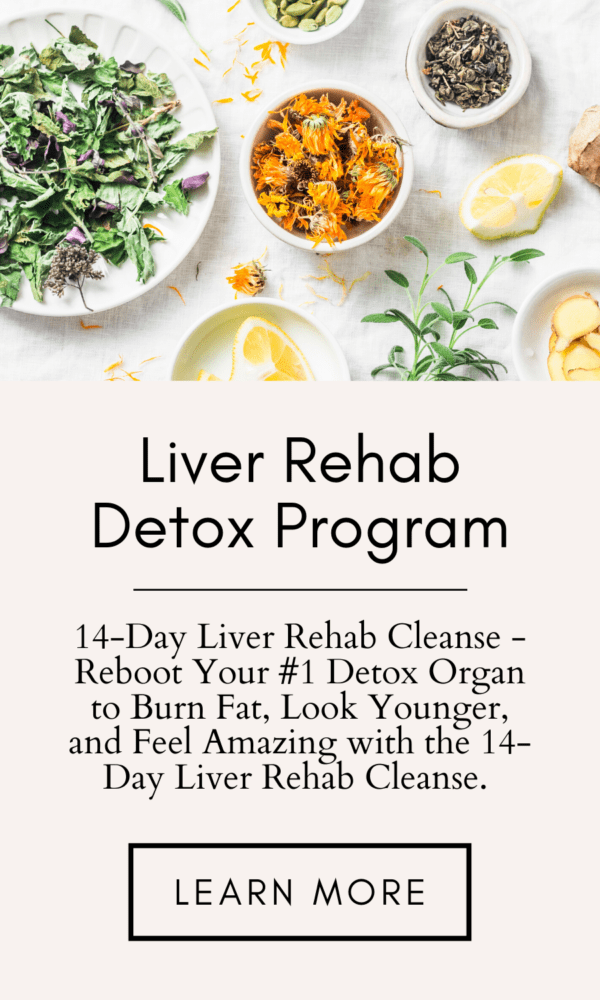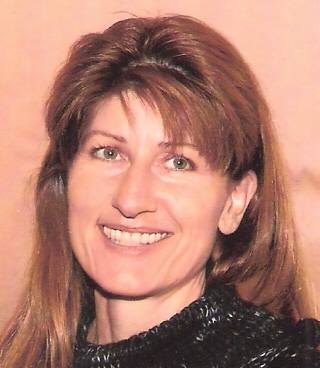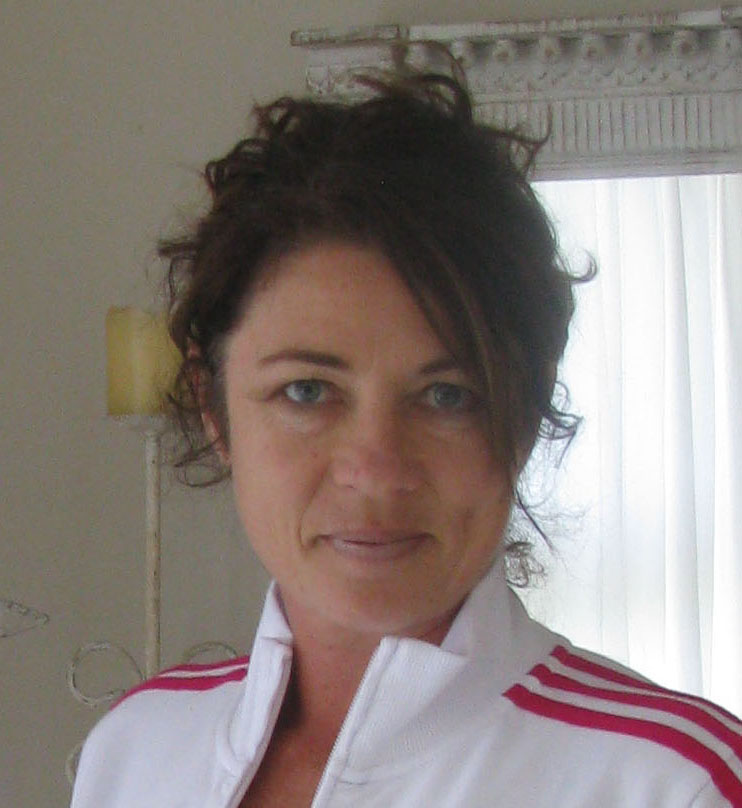Listen
Listen to this podcast or watch the video. CLICK HERE
Transcript
- 04:33 About Sayer Ji and GreenMedInfo.com
- 06:10 Natural Support for your Hormones
- 11:01 Natural Hormones and Secretagogues
- 17:53 Vitamin C
- 19:17 Pomegranates as a Backup Ovary
- 25:08 Pomegranate Supplements
- 31:52 Spices that Support Hormonal Function
- 38:36 Hormone Drops
- 42:57 Food as Hormonal Support
- 47:02 Special Needs of Post-Menopausal Women
- 51:33 Most Pressing Health Issue in the World Today: GMO’s
- 54:10 Where to Find Sayer Ji
Wendy Myers: Hello, welcome to the Live to 110 Podcast. My name is Wendy Myers. You can find me on myersdetox.com. You can find this video podcast on the YouTube channel, WendyLiveto11 and on the corresponding blog post on my website. You can go to myersdetox.com to learn all about how to heal your health conditions naturally, detoxification and my version of Paleo, the Modern Paleo Diet.
Today, we have Sayer Ji, founder of GreenMedInfo.com. He’s going to be talking about how to support your hormones naturally. It’s amazing, the array of nutrients and supplements and foods that you can use to naturally support your hormones without using or resorting to bio-identical hormones or hormone replacement therapy, which is shown to increase cancer rates.
So I want to talk about that. It’s such a good podcast. Sayer Ji is so knowledgeable. His website, GreenMedInfo.com is unbelievable. I go there myself a lot when I’m researching blog posts. I highly, highly recommend it.
The Live to 110 Podcast is not intended to diagnose or treat any disease or health condition and is not a substitute for professional medical advice. Please consult your healthcare practitioner before engaging in any treatment that we suggest today on this show.
I’m so thrilled that my Body Bio Rehab program has finally launched. You can check it out at BodyBioRehab.com.
I started this program and I wanted to develop this online program to help my clients and my readers and anyone who’s looking to improve their health to learn the basics about health. So many of my clients have low energy, they have fatigue, they have brain fog, they’re overweight, et cetera.
And so Body Bio Rehab solves these problems. It helps you to regain your energy. It helps you to lose weight, 10 lbs. in 30 days with a 30-day meal plan that I’ve outlined in the program. It can help to reduce brain fog by removing foods to which you’re sensitive with the many other tips and tricks that I talk about in the program.
And it outlines the five pillars of health. You have to eat the right diet, you have to live a healthy lifestyle, take the right supplements, you have to exercise (the right kind, the right amounts), you have to absolutely incorporate detox into your health regime. This is the magic bullet that many people today are missing in their health regime. They’re sleeping and they’re eating right, they’re exercising and they’re like, “Why don’t I feel good? I feel like I should feel better than I do.” The reason is because they are missing that key component which is detoxification, which you hear me talking about all the time on the podcast and my website that I cannot stress enough how important that is.
And then, finally, in the program, we talk about how to get better sleep, how to get more out of your sleep and how to reduce stress.
So go check it out at BodyBioRehab.com.
Our guest today is Sayer Ji. He is the founder of GreenMedInfo. He’s a widely recognized researcher, author and lecturer and is on the advisory board of the National Health Federation and the founder of the world’s most widely referenced, evidence-based natural health resources of its kind in GreenMedInfo.com.
He started it in 2008 in order to provide the world an open access, evidence-based resource supporting natural and integrative modalities.
Sayer is on the board of directors of For Fearless Parents, stirring committee member of the Global GMO-free Coalition, a reviewer at the International Journal of Human Nutrition and Functional Medicine.
Sayer Ji is also the co-founder of the book, The Cancer Killers: The Cause is the Cure with New York Times bestseller, Dr. Ben Lerner and Dr. Charles Majors. The Cancer Killer: The Cause is the Cure offers a radically new perspective on cancer overcoming the prevailing half-century old fatalistic view of ‘it’s all in the genes’ into a liberating and empowering new vision of what the human body is capable of overcoming given the right conditions.
Sayer, thank you so much for coming on the show.
Sayer Ji: Thanks for having me. I’m excited to be here with you.
Wendy Myers: Well, why don’t you tell the listeners a little bit about yourself and why you started GreedMedInfo.com.
Sayer Ji: Okay! Well, I’m a health advocate starting with necessity. Early on, at six months of age, I was diagnosed with severe bronchial asthma and spent a good portion of my life trying to piece together how to get myself off medications, prevent unnecessary surgeries (which I’ve had a number of them throughout my adolescence).
I’m presently passionate about what I do because of this opportunity available to us. With the way technology is set up today, anyone with a handheld device can access at the speed of light all the world’s scientific data that has accumulated in the past 50 years.
So when I discovered that the National Library of Medicine makes available this database, but no one knew about it, I spent about five years just indexing all of these studies that I thought were of great value to support the kind of advocacies that you’re doing all the time, bringing up integrative, natural, alternative approaches that are evidence-based, which I thought there was a real lack of referencing going on – not that you need references. I’m all about anecdotal and personal healing. I personally don’t apply the standard of having to have a clinical trial to prove that vitamin C is good for cold. But it certainly helps to counterman the criticism against our field, which is unfounded, which is there’s no evidence to support natural medicine.
Wendy Myers: Yeah, the powers that be who tried to keep their dollars for sure.
Sayer Ji: It’s true, very much so.
Wendy Myers: So let’s talk about how to support your hormones naturally. Can you support your hormones naturally without doing hormone replacement therapy?
Sayer Ji: I think it’s really profound that we have so many options today, but there is a problem with synthetic hormone replacement of course. When you look at oral contraceptives, for example, and all the increased cardiovascular disease risk, as well as cancers, it’s clear that at least the synthetic forms or those derived, let’s say, from a horse like Premarin was are not going to work well with the human body.
But of course, there’s the second option, which is to use bio-identical often derived from, say, soy compound and then converted to what it should be, about the same as what we produce. That’s a safer approach.
But when you’re dealing with replacement therapies, the real issue is, of course, sometimes, you’re going to feed the deficiency. So for women, particularly, you have this situation where the ovarian reserves starts to really tap out in the early forties and sometimes sooner depending on levels of stress and a number of other factors, of course, like nutritional issues and environmental exposures. And then what happens is the adrenal glands actually provide the backup ovary system for women.
So of course, having children or just being in a tough, stressful world will cause a lot of exhaustion. With the fight or flight stress response, the body will prioritize stealing progesterone from the ovaries to produce cortisol, for example, on the adrenal cortex. So over time, women rob from the ovaries to deal with these extenuating circumstances.
So when you replace a hormone like progesterone, which may be going down because the ovaries are starting to limit production, then it could cause an acceleration of atrophy of that organ’s ability to produce.
And there’s something called the ‘endocrine negative feedback loop’ where sometimes, you replace hormones and clearly, that’s sending the message to the endocrine gland, “I’m okay. I don’t need to produce more” because the body doesn’t want to produce.
Now, there are cases, of course, where hormone replacement might have saved that endocrine gland and give it a break so it could recover. So I certainly allow for the possibility that given the clinician is on top of their game and they’re using hormone replacement (the natural form) correctly, it could have profound benefits.
And of course, there’s also the reality, which is you look at some individuals who have decided to go on, say, early in their forties or later and do full-blown hormone replacement who are experiencing the sort of health, vitality and well-being that is reminiscent of their twenties. They can go through long periods of time feeling really good and who’s to judge that that isn’t worth the “risk”. Their quality of life is so good, their skin is just so good. It’s really remarkable. I’ve sometimes seen those who have been successful with hormone replacement.
But my point, I guess, today is that there is a third option, which I think should considered part of the precautionary principle of medicine. Until you do the heroic approaches, let’s feed the ability of the body to produce its own. It comes down to very simple nutritional steps as well as using some of the plant allies that have been around for literally thousands and thousands of years of traditional cultures.
And a lot of the I think orally transmitted information through the “medicine woman” or “medicine man” in the tribe like, for example, eat pomegranate to support hormone health later in life, now we have all these science showing that kind of works like a backup ovary and that’s just one aspect, really, of what pomegranate does because you could say the same on some levels for vitamin C.
We have research now showing that vitamin C is an electron donor. It’s able to regenerate transient hormones metabolites that have basically estrogen, progesterone and testosterone. After they do their thing, lose electrons and becomes semi-toxic or carcinogenic metabolites. They’re called ‘transient hormones’. Vitamin C research has shown that because it’s an electron donor, it’s able to regenerate the hormones that a very hard for the body to produce. And instead of it, obviously, having to be broken down and excreted, it can be utilized again.
So, for me, looking at natural ways to support the production of your endogenous hormone apply, as well as maybe even taking what you’ve produced and helping it to work better and longer is the first step for those who are concerned and they’re starting to experience a lot of the symptoms perhaps of hormone insufficiency and they know that they don’t want to go maybe HRT. It’s really expensive! It’s thousands of dollars, of course, to do it right. There are other options, of course, to start with.
Wendy Myers: So let’s talk about the first topic regarding natural hormones, secretagogues. What are secretagogues and how do they help to support hormones?
Sayer Ji: Yeah, it’s a weird sounding name, but they basically just help you secrete more of a hormone. For example, if you’re a breastfeeding mother, galactagogues will help you produce more milk. Traditionally, you get mothers milk tea or you use phenol or even papaya will help to actually increase breastmilk produce, which as any new mother knows is pretty life or death when you have a baby that’s hungry and you don’t want to use formula.
So that is true for other glands. For women, for example, the ovaries and the adrenal glands are two glands that can be benefited from really simple nutritional interventions.
I focus a lot on the adrenal gland because, again, I like to think of the little adrenal cortex, the pea-size glands on top of the kidney as nature’s backup ovaries. There’s a lot of very interesting research (a lot of it is animal research) showing that – because here’s the reality with human research. You can administer a supplement and try to measure how much more hormone the adrenal gland produces, but you can do it in the same way as you can with an animal model because you’re not going to cut into that human body and figure it out.
So basically, when you look at things like progesterone production in the adrenal gland, which is at the root of the cascade – so actually, you start with cholesterol and then eventually, it’s turned into progesterone and progesterone is turned into cortisol. Even the administration of cholesterol is able in the animal model to increase progesterone production.
And I love talking about that because the dominant meme in our culture is, “Cholesterol is bad for you!” There’s a huge campaign to vilify and demonize an essential body molecule that’s the root of all the hormones in our body. And so it’s interesting to see research clearly showing just the administration of oral cholesterol will increase progesterone production. So that’s one tip.
Then you’ve got things like pantothenic acid, very simple. It’s known as the anti-stress vitamin. It’s so inexpensive because it seems to immediately help the adrenal gland produce more of the hormone precursors that it needs to do the job well.
So the anti-stress component might be related to the fact that it helps the adrenal glands recover and therefore, not stress, of course, the ovary gland as well, which one of the consequences would be accelerated aging.
Wendy Myers: Yeah. I started giving that to all my clients across the board, pantothenic acid because everyone has adrenal fatigue. If you live in our modern world, there’s so many stressors, external and internal, heavy metal and chemical toxicity, et cetera that stress the adrenals and they need a lot of support. Pantothenic acid is perfect!
Sayer Ji: That’s a great one. And another one that really comes to mind is magnesium because we live in such a calcium dominant culture when we think about things like bone health. And the reality is that magnesium deficiency is probably the primary cause that I know of of weak bones, as well as cardiovascular disease risk because calcification of the plaque in the artery is sort of the end stage of this decades long process of the build-up of plaque. Once it gets all calcified, you end up with the potential for it through stress to cause a clot.
So magnesium is very effective for adrenal health because it’s actually essential for producing adrenal hormones, as well as it buffers the catecholamine response associated with fight or flight. So the sympathetic activation that occurs when you’re stress is buffered by magnesium.
And then you think of things that are simple. Sugar is actually treated by the body in theory as sort of a toxic exposure and there’s an adrenaline response that’s produced. That’s one of the reasons why it’s believed that for every glucose molecule you have in your body they have to break down that’s excessive. You need a certain amount of magnesium to compensate. And without it, it can have real powerful adverse downstream effects.
So magnesium, again, I like to look at your adrenal health and again, by implication, ovarian health and the sort of secretagogue issue from the perspective of real simple things, pantothenic acid. And of course, whenever you take a B vitamin, I advocate you take it with the background of the B group.
It gets kind of confusing because you have a lot of pseudo-vitamins. Folic acid, for example, really is starting to see its demise as far as it being considered a healthy vitamin form because there’s an indication that it actually is toxic for those with the MTHFR SNPs, which is the genetic inability to deal with it and produce the active form, which is the tetramethyl hydrofolate.
It turns out that that B complex group is actually found in the gut if we have the right strains. That’s actually how we were designed. Truly, we are a B vitamin producing factory and our gut bacteria support it. So, of course, when you take a folate or pantothenic as an isolate, make sure you have the background because technically, my feeling is unless it’s really delivered in a whole food form or produced endogenously, taking an isolate would probably produce some deficiency or imbalance eventually.
Now, of course, relative to pharmaceutical exposures, this is really a small concern because people love to beat up vitamin C isolates and talk about USP vitamins like they’re as toxic as drugs when we know that when it comes to the poison control centers in this country, there’s no risk truly.
But I still like to advocate for, of course, the ancestral approach which goes back millions of years as we were supposed to get our nutrients from foods and/or endogenously through bacterial action.
So in other words, B vitamins, yes, very good. Magnesium, make sure you’re on the right level with that.
And keep in mind. My feeling is magnesium, unlike calcium, you can take way too much and it can be very toxic. You can take it more carelessly in a way because if you have laxative effects, then you know that you’re probably getting more than your body needs. So it’s really nice the way that works.
And vitamin C, it turns out that that’s essential for adrenal hormone production. And again, not only does it stimulate the production of these hormones, but it will help to resurrect and keep active as well as neutralize the carcinogenic metabolites of these steroid hormones.
So those three things are really a ground floor, I think, for supporting your own hormone production.
Wendy Myers: With vitamin C, are you talking about ascorbic acid or food-based like and amla and kamu kamu, et cetera?
Sayer Ji: Great question! Ascorbic acid is really often produced from GMO corn, which is then either used to be converted through a genetically-modified form of yeast or bacteria into ascorbic acid, so it’s not a pleasant picture. So yes, when you can get it from a dense source like amla or kamu kamu or, again, if we really look at the palette of rainbow-like foods, the vegetables and fruits, those are going to provide literally hundreds of other essential biomolecules.
So my feeling is, of course, even though you get less by molecular weight because we’re so focused on, “Okay, I was told to take vitamin C. I need to take a thousand milligrams,” and we forget that relative to its intake and the quality and its effect on our body, it’s really more about, again, getting it from a food source like you mentioned. That’s excellent.
But even then, I will say, for convenience, there are companies that produce chelates that they’re going to take the ascorbic acid bound to a mineral, for example, mineral ascorbates. Those are, at least, going to prevent some of the “acidity” that occurs. And then, of course, a lot of the whole food vitamin manufacturer still produce great alternatives as well.
Wendy Myers: So let’s talk about pomegranates. I thought it was really, really interesting. I was researching the questions for this podcast and I thought it was really interesting that you wrote an article about how pomegranates can serve as a backup ovary. Can you talk a little bit about that?
Sayer Ji: It was amazing to me, Wendy because when I looked at the study that was published – gosh! It’s been about seven years I think now. It was an animal study and this is a common practice in research. It’s a little gruesome. I’m sorry if there are any vegans listening or animal rights activists, but unfortunately, that’s the way body medicine marches on.
They take out the ovaries of a female rat and within a few weeks, they start to experience full-blown menopausal symptoms, which include things like rapid deceleration of bone quality and density, mid-section fat accumulation, depression – one could argue that because they were just experimented on, they’re a bit depressed, but regardless.
And then what you do is you administer the intervention group, pomegranate, and it’s as if you’ve never taken out the ovaries.
And to me, this was fascinating because in the era of Fosamax, which is really industrial solvent being used to make the bone denser (they’re killing people, unfortunately, and I can go into why I say that) or things like estrogen modulators, which are still risk for embolism (a lot of the bone drugs are just really, quite frankly, harmful), of course, when you have something as pomegranate reversing all these symptoms of what is basically your menopausal syndrome and then you look at the classification of the pomegranate fruit (and it’s actually the fruiting ovary of the pomegranate plant) and then you take a cross-section of this beautiful fruit, it looks just like the cross-section of an ovary…
Wendy Myers: I love that!
Sayer Ji: I know!
Wendy Myers: You had the diagram on your site. I thought it was so interesting.
Sayer Ji: Isn’t that fascinating? Something that’s called the ‘Doctrine of Signatures Medieval Medicine’, they drew parallels. The brain looks like a walnut. Different foods look like different body parts. Of course, it’s not all literal, but it is fascinating and I feel that this parallel –
Now, here’s another really fascinating fact. When they assayed pomegranate along with hundreds of other plants to see how much esterone they could find (because it turns out, E1, which is a very important form of estrogen, especially during menopause and peri-menopause), they found higher levels in pomegranate than anything they’ve ever tested before.
So not only did they see experimentally that it could replace the ovary of an animal, then they identified the actual compound, which is essential for preventing those symptoms of taking the ovaries out or the ovaries naturally declining in production and then, of course, it looks like an ovary, and then, of course, you go into cultural history and almost every culture that had access pomegranate associated it with regeneration and increased youthful, prosperity, longevity, it became clear that wow, they were just basically performing their thousands of years of clinical trials on themselves just eating it and noticing the effects. It really does help to regenerate our health and keep us young later into life.
Wendy Myers: So what forms of pomegranate? Are we talking the gist, do you have to eat the seeds or what-not?
Sayer Ji: Very good question. The seed would contain most of the compounds associated with hormones as I understand. And then you have the pith stuff that’s very astringent, which is the white stuff, that would have a lot of benefit too. And then the juice, very much so. And it’s fascinating, here’s why. You know, the number one killer in men and women is cardiovascular disease (heart attack and atherosclerosis). It turns out that pomegranate is the one thing studied that was shown in trial to reverse the intima-media thickness, which is the middle portion of the carotid artery that swells and blocks the flow of blood up to 40%. Some of the people in this trial started to see the reversal of this deadly disease that, apparently, there’s no conventional cure for within a matter of just months.
And when you take pomegranate in, it has a very astringent taste and effect. The gums of the epithelial tissue (which is the same tissue that is found in the endothelium, the lining of the artery), you can see how it literally cleanses the gunk and the plaque in the arteries.
I mention that to women because we still don’t think about that as being the primary risk. Women are more concerned about breast cancer for reasons that unfortunately are not right because of over-diagnosis and x-ray mammography and the way the industry has convinced women their breasts are just time bombs ready to go off for breast cancer. I would remind them that pomegranate then two things. It helps to support their hormonal health and then it reduces the cardiovascular disease risk.
But here’s the third thing that’s fascinating. As an anti-cancer agent, it is one of the more potent identified thus far. So if you go on GreenMedInfo database, you look up ‘pomegranate’, you’ll see over a hundred diseases including very serious infections like MERSA, viruses that are also co-morbid and cardiovascular disease like herpes family viruses, they would kill those.
So again, it’s amazing when you look at these substances and realize that they truly are able to do many things at once.
Wendy Myers: I always overlook the pomegranate at the store because they’re such a pain in the ass to eat.
Sayer Ji: I know, it’s true! I have pomegranate pills for that reason, I know.
Wendy Myers: So you think a supplement is as effective. Is there anything to look for in a supplement?
Sayer Ji: I would say yes. Whenever possible, I go for excipient-free or reduced, which means all those inactive ingredients, they have to label. They’ll say ‘other ingredients’. You’ll see magnesium stereate and sometimes other filler ingredients. You just really want it to say nothing else and it’s hard to find
One thing I highly suggest you do, it might be a little pithy and a little woody, but if you take the areoles, which are like the seeds and you get them frozen organic and throw them into your smoothie – and women, please do this because this is in line with what we’re talking about – add in flax seed meal, that’s another one which has so much benefit for female hormone health especially reduction of breast cancer risk as well as helping with a lot of the perimenopausal and menopausal symptoms like hot flushes. It’s actually very effective of modeling the effect of human estrogens, but doing it without any other risk. It’s quite the opposite.
So you make a smoothie out of those. Maybe add in some unsweetened coconut milk, which is a remarkable alternative a lot of the milk alternatives that really are not very nutritious. Hemp milk is another really good one. Then you can add in some blueberries, which have a lot of benefits as well. So that’s one way you could do it.
Wendy Myers: And the flax seed, it needs to be freshly ground, correct? I know some of the oils begin oxidizing if you buy the flax seed pre-ground.
Sayer Ji: I agree. That’s a great point. The thing about it is if you go to the hardware store and you get linseed oil, which is really oxidized flax seed oil, it’s very toxic. You want to make sure whenever you can to reduce the exposure of light, time and oxygen to seeds that have been opened up.
So when you grind it yourself, great! Some of manufacturers like Barlean’s (I have no connection to the company although I like their work) will nitrogen flush the container so that there’s no oxygen present when they grind it. It’s convenient.
Realistically, when you get people to, including myself, do these multi-step process smoothie, they might not do it.
Wendy Myers: Yeah.
Sayer Ji: Or again, your cold-pressed, nitrogen flushed flax seed oil, which is [inaudible 00:27:17]. They make some which the filter is bigger, so you get a lot of the beneficial estrogen. And estrogen has become a dirty word these days for women because the way that companies like Astrazeneca co-opted the term estrogen led people to believe and dumbed down physicians to the point where they said, “Estrogen causes cancer,” what they’ve done is they’ve really warped the reality.
A lot of the estrogenic compounds in our diet are anti-cancer because they modulate the estrogen receptors and hormone sensitive cell types like breast and ovary.
Wendy Myers: But flax seeds, they upregulate estriol, not estradiol, which is the more potent form of estrogen.
Sayer Ji: Well, that’s a really good point. They also are what they call ‘selective estrogen receptor modulators’, which is a whole class of pharmaceuticals that failed miserably. Arimidex and Tamoxifen are in this category. Tamoxifen is classified by the World Health Organization, the American Cancer Association as a human carcinogen, but they still give them to treat and prevent cancer.
Flax seed is able to selectively block the receptors on breast tissue that are known to be up-regulated in real cancer and down regulate those that are not. And then it’s able to target beneficial estrogen receptors, say, in the bone.
So nature does the job that pharmaceutical companies aren’t able to do because they’re dealing with infinitely intelligent molecules designed by nature versus really the byproducts of the petrochemical industry which are mostly patented drugs on the market.
Wendy Myers: Yeah. And if you can’t patent it, no one wants to market it. They don’t make any money on it.
Sayer Ji: Thank you. If the listener comprehended that (and I’m sure most do), then they’d realize why you would never look at an FDA-approved drug as a safeguard because it’s literally the kiss of death. In order for a company to get an FDA drug approval, the average amount of capital expended upfront is $1 billion. For anyone who gets that kind of capital and has a fiduciary responsibility to shareholders, they have to take a natural compound, alter it synthetically, which produces poison literally. That’s how it’s able to give a market exclusive [inaudible 00:29:29] patent.
So when you see FDA drug approval, more than 50% of all FDA-approved drugs actually are ripped of the market for causing death and destruction before the patent comes due, because they are poisons. That’s almost invariable.
Now, there are a new group of FDA-approved drugs which include plant-derived compounds, which are better, but they’re really just trying to coop natural medicine because you can grow these plants in your backyard until a drug company gets patents on it, then it’s the same problem.
Wendy Myers: Yeah, I think it’s hilarious that they’ll have an old drug that’s proven to work or what-not, they’ll change it by one molecule and re-patent that and sell it for five times the price as a new drug.
Sayer Ji: Oh, my God! Yes! And the unintended adverse effects of most pharmaceuticals because of this playing God is 75% identified adverse effects – my project on statin drugs alone with GreenMedInfo, I spent months and months looking through the literature for signals of harm. We have 315 adverse health effects that have linked now to statin drugs.
And that’s not uncommon. My assumption is that most of the pharmaceuticals in the market have approximately a thousand adverse effects. Most of them are sub-clinical. You’ll never know that they’re slowly harming you.
So stay away from drugs just like the old war against drug went.
Wendy Myers: Yeah, it was really heartbreaking to me to watch my father, he was on statins for almost a decade. And then eventually, you see the depression, the brain fog is setting it because there’s no cholesterol for the brain to work.
Sayer Ji: Yes, exactly!
Wendy Myers: The brain is over 25% cholesterol. And then, I’m sure his libido is toast. Eventually, he got this thing where his muscles were really, really tight. He started pulling his muscle. His muscles began atrophying. They began atrophying to the point where he couldn’t even get up to the restroom. He had to go to a nursing home. And this is a fairly side effect of statin medications, muscle atrophy.
Sayer Ji: Absolutely! Absolutely! Yeah, in fact, it’s an exception for someone not to experience them. Some people, it’s sub-clinical, they don’t notice. But yeah, it’s really tragic what’s happening with statins. I mean, relative to consumption of dark chocolate, even a small amount, less than an ounce today or the consumption of pomegranate juice daily, statins are infinitely higher risk and infinitely less benefit when it comes to clinical outcomes.
Wendy Myers: Let’s talk about a few spices that can support hormonal function.
Sayer Ji: Well, one of them, which is very interesting is cumin because it’s been studied to have the ability to increase the production of progesterone in the animal model, that is, in the adrenal gland. That’s one that I’m pretty fond of. There are a lot of other benefits especially with blood sugar and insulin resistance.
The other one that is not really so much a spice, but I do think that it’s worth talking about briefly is soy because it’s really been beaten up for so long – and for good reason in part. The soy industry has really been co-opted by genetically modified processes. So the biotech industry has taken over soy. But if you get organic soy and consume it in moderation, which means like if you’re getting a latte and instead of using regular milk and you use soy milk, there’s enough of the isoflavone like genistein and diazine which is going to actually have therapeutic value.
It’s interesting because a lot of the research on soy that seems to have caused a red flag initially was on animals and where they fed them large amounts. They caused their pancreas to see some growth, hypertrophy. And that could be a “tumorous growth”, but tumorous aren’t cancer. There’s a difference. So basically, it was blocking the enzymes in the pancreas proteases, which break down these protease inhibitors. And so it’s like this war between the plant kingdom and our bodies. But the reality is that protease inhibitors like found in soy actually kill tumors as well and cancers.
So when you look at all the human studies, epidemiological studies and recurrence of breast cancer studies, soy clearly confers huge survival advantage versus those who don’t consume it. And that’s in part because it blocks out at the receptor sites. The more potent xenobiotic estrogens, which are everywhere now unfortunately (you look at things like bisphenol-A, you look at parabens, a lot of these chemicals from the plastics like preservatives and body care), some of them have eclipse the activity. So that one that I would say is of great value, soy.
Wendy Myers: Are you into soy isoflavone supplementation?
Sayer Ji: That is something I’ve seen work. In some cases, you can actually espy an activated form because you have daidzein and glycetin, which are not converted into the active form. So bacterial fermentation is used or even our guts will do that or you could do fermented soy foods. Tempeh, miso, natto all contain the “active” form. So you can buy supplement forms of it. But sometimes, they’ll just put in the isoflavones non-converted. So you want to make sure it says daidzein, E-I-N at the end or glycetine versus the I-N because there’s a difference.
But soy is so controversial. You could do flax seed and that would probably be just as valuable in certain respects. It contains enterolactone, enterodiol, so basically, it’s able to break down in the gut again into beneficial estrogen modulators.
I’m trying to think what other spices that are really noteworthy here.
Wendy Myers: Turmeric? Curcumin?
Sayer Ji: Turmeric. Oh well, yeah. Turmeric is a good one all around. There is some evidence to show that it does seem to modulate the stress response in the body. It actually has quite a lot of research having anti-depressant effects, which is important because a lot of women, as they age, they start to see the hormone insufficiency, which start to zap their well-being and their ability to handle just regular stress and they get over-diagnosed with things like depression and anxiety when there’s a hormone issue beneath it.
So given the option, if they’re diagnosed with sort of hormone deficiency-related psychiatric condition, then turmeric might actually be a good alternative. There were several studies recently done comparing it to Prozac finding that Prozac was not more effective than turmeric.
And in this case, they used curcumin. It’s the primary polyphenol. Of course, it makes it super yellow. Regular turmeric is about 3% to 5%. You can buy extracts where they are lecithinized meaning they’re bound to the phosholipid which help make it water soluble and get through the barrier in the liver known as the glucuronidation barrier. That’ll get into systemic circulation and then through the brain theoretically. About 750 mg. a day of curcumin minimum would be ideal.
And then a lot of the side benefits, of course, is it’s insurance policy against cancer, certainly things arthritis issues. Osteoarthritis are going to be benefited. So there’s a lot benefits to turmeric for sure.
Wendy Myers: I love turmeric. It helps to detox heavy metals and reduce food sensitivity reaction. There are so many benefits. It’s anti-inflammatory, pain. I give it to all my clients. I think it’s just an amazing herb. So what about cohosh.
Sayer Ji: Yeah!
Wendy Myers: This one is a really big post-menopausal supplementation.
Sayer Ji: Yeah, it’s very good actually. There is some research that I’ve run into [inaudible 00:37:21]. It’s at least equally potent to estrodiol. So the more powerful estrogen that we associated with HRT, black cohosh can approximate its efficacy.
I would consider though using it in tandem with Vitex because it seems to have the property of increasing progesterone up-regulation. And progesterone, of course, is going to help oppose estrogen and then of course, it’s the mother hormone from which estrogen is produced. So I like further upstream to the source of the deficiency. So Vitex and black cohosh in tandem I think are an excellent way to go about it.
Wendy Myers: What is Vitex? What is it? Is that a supplement?
Sayer Ji: Yeah. It’s a plant extract known chasteberry as well. I think vitus agnus is the Latin name. That’s the plant that there’s a lot of good research on it helping with – I believe it actually is follicle-stimulating hormone. So it seems to modulate directly the underlying pathways, which will help upregulate production of the entire cascade. So yeah, that’s one I would consider as well.
Wendy Myers: How do you feel about taking hormone drops, say, precursors to the hormones like pregnenolone and DHEA? Can you talk about some of the problems or perhaps the benefits of doing that?
Sayer Ji: Well, certainly, there’s a lot of research. For example, DHEA and autoimmune conditions that are linked to adrenal fatigue. It does seem to really help boost adrenal function. If there’s trouble producing adequate cortisol – let’s say, you’ve been under traumatic conditions, even just again having two children would be enough or even one child, to be a mother, for example, for five or ten years without enough help would be enough to cause significant zapping of the adrenal glands. DHEA has been shown to be pretty effective because it’s a good precursor to that pathway as well as testosterone.
Pregnenolone is really upstream in terms of pregnenolone before progesterone. That’s something called the ‘memory molecule’, in fact.
I haven’t had a lot of experience working with people where they’ve used it, but I can say it makes a lot of sense. If one is going to not just go to estrogen replacement or testosterone, taking pregnenolone under the guidance, I would say, of a clinician who has done the proper labs would not be a bad idea either. I think it’s worthwhile.
Wendy Myers: I’ve heard practitioner say it’s almost like playing Russian roulette because you don’t know if DHEA is going to produce testosterone or estrogen.
Sayer Ji: That’s a really good point, absolutely. And then, of course, even when you’ve met the goal and produced the right amount of the target hormone, the problem is, of course, once you produced it, it has a life cycle and it’s got to be degraded and then, ultimately, gotten out of the body.
And it’s important especially for those who are taking replacement therapies that will produce additional estrogen to get adequate levels for things like sulforaphane, which are going to help to break down properly the estrogen.
There’s the 2-hydroxyl and 16-hydroxyl metabolites and they’re in a ratio. And 16-, as I recall, that’s the beneficial. That’s the one that has anti-estrogenic properties and 2- is considered more of a risk for cancer promotion.
So if you get the right amount of co-factors, especially again cruciferous vegetables, sulforaphane is the active ingredient that makes broccoli sulfurous. You’re going to do a lot to protect yourself from the risk, so again, those who are on HRT, you don’t have to freak out. You just want to make sure you’re taking proper precautions. You’re making sure your liver is flowing correctly, your bowel is extracting the bile correctly, enough fiber, for example, to pull that out.
It’s just a matter of common sense, I guess, when it comes to that.
Wendy Myers: Yeah, I did a urine hormone testing from Precision Analytical. It’s very important I think to not just see the hormone levels, but the metabolites. I had somewhat high 4-hydroxy metabolites, which is correlated with xenoestrogens and plastics. I have a bad habit of drinking out of plastic bottles.
Sayer Ji: Yeah! Oh, wow! That’s really cool.
Wendy Myers: And so I have to work on that. I think it’s really interesting to look at all the metabolites as well.
Sayer Ji: That’s fascinating! So there’s a 4-hydroxyesterone. Is that metabolite associated with plastics and xenobiotics?
Wendy Myers: Oh, yeah. Xenobiotics, yeah.
Sayer Ji: That’s important information. I would be very interested in a test like that.
Wendy Myers: Well, I’m happy to do one for you.
Sayer Ji: Right! We’ll have to do that then. I might be higher than I think. I try to do Mountain Valley water whenever possible. I have a distiller, which is glass-based, but gosh! It’s so prevalent, the plastics these days.
Wendy Myers: It’s hard. It’s impossible to escape. It’s absolutely impossible.
Sayer Ji: It is true. Yeah, it’s very hard. I did find a good amount of research on probiotic strains capable of breaking down some of the compounds that we’re incapable of breaking down like bisphenol-A and some of the organophosphorous pesticides can be properly broken down. They use the phosphorus and carbon as a fuel source. These little bacteria are pretty clever.
Fermented food, of course, is always a great idea and other means of eating a probiotic-rich diet.
Wendy Myers: Yeah, yeah.
Wendy Myers: So let’s talk a little bit about wild yam because that’s a really popular one that you find a lot of supplements to help hormonal support.
Sayer Ji: Yeah, it’s an interesting supplement because the digestin within it, the biomolecule is used to produce a lot of the bio-identical hormones. But as I understand it, there’s been very little evidence that it itself works by being converted into steroid hormones, that it modules endocrine pathways in a way that I guess we truly can appreciate. I personally don’t know that they’ve identified how it works, but it is part of a very ancient tradition of herbalism. I would almost default to some of the oral tradition.
And actually, herbalists that are using it would be where I would go for advice. I’m using it. I’m just checking my database because we have 1700 herbs and natural substances index to see what research is because I know I’ve indexed some research on wild yam.
Hmmm… wow! Unless it is actually not on there. Have you any experience with wild yam?
Wendy Myers: I don’t. I guess I’ve heard of it as a popular supplement to support hormones.
Sayer Ji: Yeah, interesting.
Wendy Myers: Maybe you have it under the scientific name or something.
Sayer Ji: Yeah, it’s possible. But I know I’ve got research on yam somewhere. That’s fascinating. Yams have been studied for reducing hormone insufficiency symptoms like hot flushes.
The other thing that I’m fond of is there’s a clinician and researcher, Dr. Kelly Brogan who works a lot with women for psychiatric issue. She’s a psychiatrist. What she found was that through her experience working with women, yams, roots and vegetables were a huge important part of the diet.
If you look at the Paleo community, it’s kind of male dominated. They try to exclude carbohydrates. Grains definitely get out. Well, it turns out the yams are really beneficial to women and her experience. I would say the women listening here looking for an alternative to a potato, I would do the yam food itself because I think it does have some of the medicinal properties we’re referring to.
Wendy Myers: Yeah, I’m not big on the low carb diet for sure. I find a lot of my female clients (even men too), they need carbohydrates. A lot of people, it does not work for them to do a very, very low carb or ketogenic diet.
Sayer Ji: That’s interesting. I think that’s probably true too when we get a greater appreciation for the gendered nature of this field because right now, the research model is still based on the male Caucasian body that it’s really still – it’s cutting-edge on some level to say what you’re saying. I think it’s true. Women have different needs, and certainly carbohydrate levels. The right kind, of course, I think should be used appropriately.
Wendy Myers: And so what about maca? A lot of my clients are trying to fix their hormones or downing maca in their smoothies every morning. Are there any cautions or issues with maca?
Sayer Ji: I find it to be fascinating because maca is so effective for fertility when it comes to the animal model. You can’t really argue with the results. You tend to become more fecund, more likely to have a a successful pregnancy and birth if you take it as an animal (I’m talking about goats and such). And then there’s been some research on post-menopausal women using it for psychological symptoms and sexual dysfunction.
But when it comes to the actual research on the hormone pathways or its ability to increase testosterone and estrogen, there’s not really that much that I found. I was surprised because I thought I would find that it increases hormone production, but I haven’t found that.
So it’s fascinating. I guess that’s part of what we’re learning about the body. Sometimes, we won’t find an actual molecular mechanism to explain the clinical result. I would say the proof is in the pudding and women, especially older women, should consider using it because of the good results that I’ve heard a lot of people get.
Wendy Myers: Are there any special considerations or anything you want to add about maybe the special needs of post-menopausal women?
Sayer Ji: Yeah. Well, I think women today are truly being victimized by the system of over-diagnosis that’s occurring. So we’re doing these mass screenings of asymptomatic populations. No symptoms. You’re just supposed to go and get yourselves scanned or tested for a pre-cancer.
And what’s happened is that over decades of doing this, the results clearly now show that women who, for example, go through annual or bi-annual screenings have increased breast cancer mortality because what they’re often diagnosing early stage are completely benign lesions and they’re treating them as if they were cancer.
And of course, once they identified cancer that would never have caused symptoms or cause death as if it was and they treated it, it inflates the statistics like they’re saving all these women’s lives.
This is happening too with osteoporosis. A lot of women believe there’s such a thing as osteopenia and osteoporosis. They don’t realize that those standards were set up by the World Health Organization completely arbitrarily in the early nineties.
What they did was they took a 25- to 30-year old young adult woman and said, “Every woman from here on out no matter what your age, you could be 110 has to have the density of this 25-year old woman. If they don’t, then they will be labeled as having either osteopenia or osteoporosis.”
That’s called the t-score. So if you have osteopenia, you have one standard deviation from what they consider the norm and if you have osteoporosis, it’s 2.5 or more.
It turns out that a 30-year old, 16% of them according to just the normal variation of physiology have osteopenia in that scale. And then 3% have osteoporosis. It’s completely arbitrary because it’s based on x-rays showing you how much mineral is in the bone. It doesn’t tell you about structural integrity or bone quality.
So what they did is they had people adapt these standards. Billions of dollars of machinery was bought into. And then they rolled out the bisphosphanate drug category, which is one of the most toxic of all categories in medicine. It was first used, this chemical, to prevent scaling in plumbing equipment here in Florida. It can cause the bone in the jaws to dissolve. Necrosis is one of the most commonly known adverse effects. And it just destroys the gut. It can poke a hole in your stomach. They tell you to stand and drink water because it will basically burn a hole in your stomach. It is poison.
So women are being diagnosed as if aging is a disease and then they slap a diagnosis they can justify, giving them poison chemicals and then, again, they become a statistic.
And this is happening with thyroid cancers. It’s happening with breast cancers. It’s happening with osteoporosis. All these screening techniques are basically redefining the body as entropic machine that basically needs medical intervention when there’s nothing wrong.
So I would say women need to be extremely cautious. They need to be listening to your podcast. They need to be educating themselves on resources like GreenMedInfo. The research is there. You don’t have to be a victim. Your body is this miraculous thing that regenerates every moment. We have to be extremely careful about medicalization of the body.
Wendy Myers: Yeah, I think it’s very, very clear and I think more and more consumer and patients are becoming aware of this. The t-score of 2.5 or less and many of these arbitrary ideal ranges and lab ranges are set up to sell medication. They have nothing to do with reality and health.
Sayer Ji: Well, in fact, I’ve identified a rather large set of studies from high impact journals showing the higher bone mineral density you have as you age, the higher is your risk for actual malignant cancer. It’s a profound increase.
So it’s quite the opposite. Our bodies were designed to lose mineral density as we age – especially around 40 for women. The ovarian reserve goes down, natural thinning of the bone, that is actually imp in reducing actual cancer risk.
Again, everything is almost backwards. The point I guess is you have to trust the body, trust nature’s design and then work with what you have. Obviously, being aware of one’s body. Eye and gait disorders are a greater independent risk for facture than is bone mineral density. Of course, body awareness and all that is just as important of course.
Wendy Myers: Well, Sayer, I have a question I like to ask all of my guests. What do you think is the most pressing health issue in the world today?
Sayer Ji: Oh, my! The most pressing health issue today. I have to say, I probably would put on equal ground vaccines and genetic modification of our food supply because they actually converge.
People don’t realize this, but everyone’s marching against Monsanto. Monsanto is a wholly owned subsidiary of Pfeizer indirectly. Actually, [inaudible 00:52:06] is the company that took over Monsanto and Pfeizer owns that.
So it’s like these companies are genetically modifying our bodies through basically producing a lot of the vaccines in the market today that are byproducts of genetic modification like Gardasil. The most toxic vaccine ever produced in terms of adverse events reports is the GMO-vaccine.
And then once you alter the food supply and the biosphere in the way that they are, you can’t undo it because it’s like a bad Ford, you can recall it, but you can’t recall a GMO organism. Once it’s in the biosphere, the genes can transfer horizontally and through biopollution, there’s fertilization that occurs of these non-GMO plants.
So eventually, by the way, there will be no GMO, any soy or corn on the planet because it will all naturally become GMO.
This is a violation of our most basic informed consent and health rights. You can’t make these decisions that are permanent for every generation to the future and claim that it’s somehow good for us. So for me, having the right to choose whether to vaccinate and/or whether to be exposed to GMO foods (so we at least need them labeled) is like the number one health concern we’re facing. Even if we don’t really care about it, we usually have grandchildren that will be affected and the planet itself is actually being altered through the GMO agricultural model irreversible.
So I hope that makes people more conscious of their choices.
Wendy Myers: Yeah, it’s a frightening concept for me as well because I think it’s so important that we have these seed banks that heirloom seeds and we save our seeds. We save these feeds that have not been modified in any way, they had been naturally hybridized, they’re centuries old seeds, so that we can save our healthy food supply. I think it’s going to have huge, huge impacts for future generations.
Sayer Ji: Absolutely! That’s a good solution right there. That’s one good thing that you could do.
Wendy Myers: So Sayer, can you tell the listeners about where they can find you and about any of your future plans?
Sayer Ji: Sure! Our primary way of reaching the consumer/patient listeners is through our website and our free newsletter. Daily, we put out articles, videos, memes. There are free events, et cetera. So if they go to GreenMedInfo, they can download my free PDF, The Dark Side of Wheat, which explains my feeling that no one should ever eat wheat and gives you a good argument for that.
And then, of course, Facebook, social media is how you can find us. And I’m in a lot of the summit events, as you are. It’s always nice to be a colleague. They can find us that way.
Wendy Myers: Oh, great! Well, Sayer, thank you so much for coming on the show. That was really, really good. I know our listeners are going to get a lot out of that.
Sayer Ji: Thank you. I hope so. It’s a great pleasure. Thanks for the work you’re doing.
Wendy Myers: Yeah, thank you. And everyone, you can find more about me at myersdetox.com, learn about how to heal your health conditions naturally and all about my version of Paleo, the Modern Paleo Diet and detoxification (one of my favorite subjects). Thank you so much for listening to the Live to 110 Podcast.

